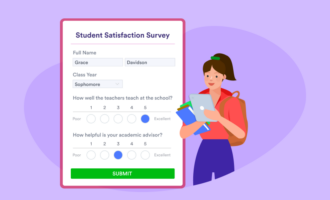One of the biggest crises in education is teacher turnover.
The statistics are startling. One teacher attrition and mobility study for the period 2012–13 by the National Center for Education Statistics shows that an average of 16 percent of public school teachers change schools or leave teaching every year in the United States. This is more than 500,000 teachers nationwide.
And the impact of high turnover on the education system is devastating. It costs schools across the country as much as $2.2 billion annually in attrition costs and approximately $4.9 billion per year to replace teachers who transfer, according to a policy brief by the University Council for Educational Administration. Beyond financial hits, teacher turnover is a disruptive event that can significantly set back a child’s learning, notes Christopher Redding, assistant professor of educational leadership at the University of Florida.
School administrators are on the front lines to help reduce this high turnover. While there’s no simple solution, one of the key tools you as an administrator can use to combat attrition is strong communication with your teachers. The more opportunities you create for teachers to provide input and feedback in school, the better able you will be to help keep them happy. By strengthening communication, you create an environment that encourages teacher retention.
Pro Tip
Looking to boost teacher retention? Collect feedback for free with Jotform to improve your staff members’ work environment.
Strong communication provides insight into job satisfaction
Happy teachers stay put. A study by the National Center for Education Statistics states that of the 3.3 million public school teachers active during the 2011–12 school year, 84 percent stayed at the same school. That’s encouraging.
But if you don’t regularly communicate with your teachers, how do you know if they are satisfied?
One of the best ways to gauge teacher satisfaction is to simply ask them about it. Administrators can easily create digital surveys or opinion forms that teachers can access from anywhere at any time to give feedback on their experiences at school. Digital tools, such as Jotform, allow you to create documents and collect real-time data from teachers.
Their feedback will give you viable data to use in improving satisfaction. It’s up to you to create the opportunities for feedback.
Open communication helps cultivate a culture of collaboration
Teachers are usually more satisfied at work when there is a strong, collaborative school culture, notes education reporter Madeline Will. Teaching can be a very isolating profession, even in a classroom full of students. This is why it is so important for administrators to create a culture of collaboration in their schools.
According to a report by professors Meghan Groome, Julia Rankin, and Jennifer Wheary on the STEM teacher crisis, one in five new teachers leaves the profession when they do not have access to collaborative relationships. Communication is the key to that collaboration. Administrators should encourage teachers to share ideas with them and with other teachers as a way to improve communication. Digital lesson plans and peer reviews are great tools for facilitating that collaboration.
Effective communication encourages improvements
Working conditions play another key role in teacher satisfaction and, therefore, teacher retention. Professors Matthew A. Kraft and John P. Papay explain in an essay on teacher workplaces that teachers’ views of their working conditions are strong predictors of whether or not they stay at a school. This cause-and-effect relationship has been replicated in multiple studies in a wide range of school districts and states.
One of the examples Kraft and Papay highlight shows that teachers in Massachusetts are three times more likely to leave a school with poor working conditions than one with good working conditions.
For administrators, these types of studies show the importance of improving any less-than-ideal working conditions for teachers. By communicating regularly with teachers to address working conditions, you will learn where they would like to see improvements.
It may be a good idea to provide a way for teachers to communicate these issues to you anonymously. Some may be hesitant to discuss sensitive issues about working conditions if they fear being judged negatively for any complaints. Online forms or even physical suggestion boxes are good ideas for encouraging teachers to speak up without forcing them to be in the spotlight.
Consistent communication supports teacher success
When teachers succeed in their jobs, students and schools succeed. The goal of any and all communication between administrators and teachers should be to support teacher success. By ensuring that teachers feel supported, you increase the chances of them being satisfied at work.
Kevin Armstrong, Ed.D., executive principal of DuPont Hadley Middle School, a Title 1 school near Nashville, Tennessee, has a nearly 90 percent teacher retention rate. “It’s all about support,” he says. “We have to give support to the point where teachers [actually] feel supported.”
Consistent communication is crucial to understanding teacher needs. The best way to learn what teachers expect in terms of support is to give them the opportunity to communicate their expectations and needs. But listening isn’t enough. You have to engage with them and let them know you are willing and able to provide the support they need.
When they are struggling, teachers are going to turn to administrators for support and assistance. This is an important opportunity for administrators to do what it takes to ensure teacher satisfaction and retention. By creating an atmosphere of open and secure communication, administrators can intervene to prevent turnover.
Photos by Mimi Thian & Kylie Haulk on Unsplash









































































































Send Comment:
1 Comments:
More than a year ago
great article!